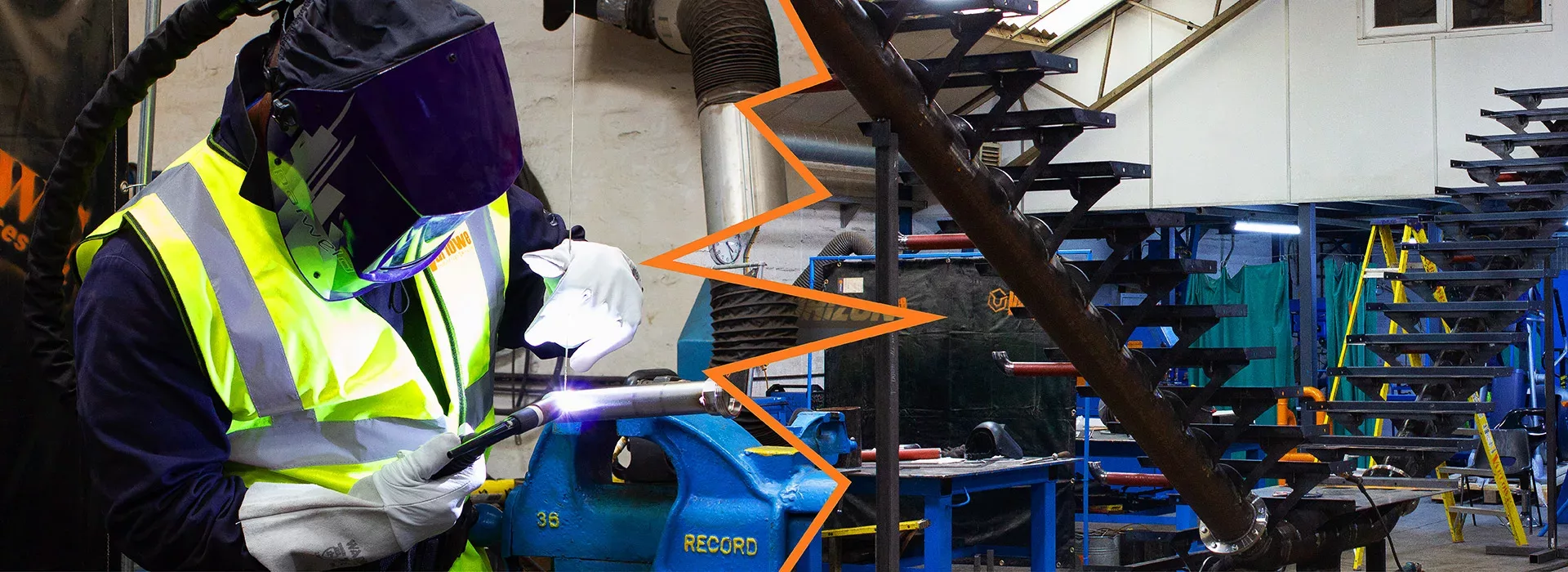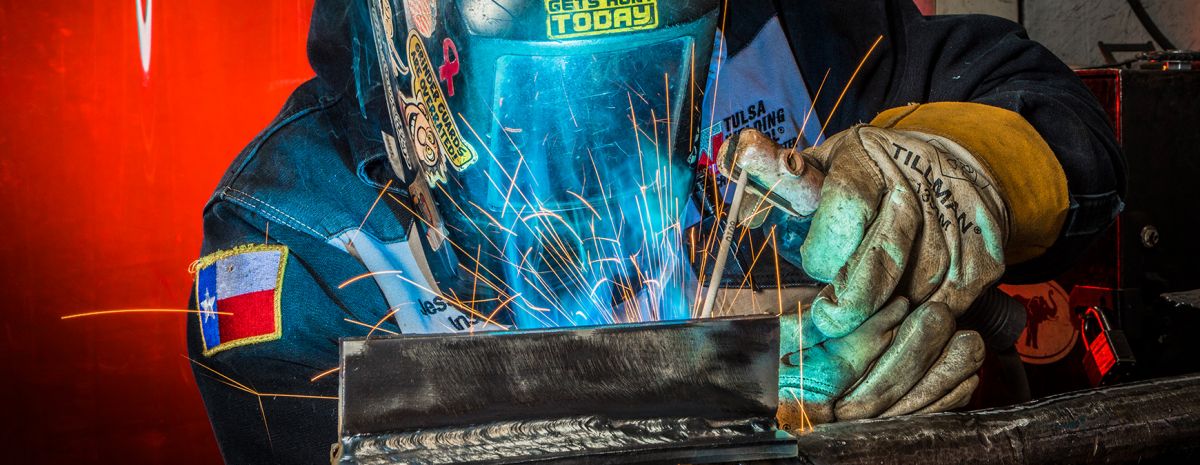Typical Welding Repair Service Issues and Exactly How to Address Them Properly
Welding fixings often experience an array of issues that can threaten the stability of the end product. Usual problems consist of insufficient penetration, porosity, and misalignment, to name a few. Each flaw presents distinct obstacles that require specific strategies for resolution. Understanding these issues is necessary for welders intending to improve their results and skills. This conversation will explore these common welding fixing concerns and reliable techniques to address them.
Poor Infiltration
Insufficient infiltration takes place when the weld metal stops working to completely fuse with the base product, resulting in weak joints and possible structural failures. This problem frequently originates from insufficient heat input, wrong electrode angle, or incorrect welding speed. Welders may experience inadequate infiltration because of a mistake of the necessary parameters for a particular product thickness or kind. Furthermore, contamination on the base material's surface can impede effective bonding, exacerbating the issue. To deal with poor infiltration, welders must guarantee proper setups on their equipment and preserve a clean work surface area. Routine inspection of welds is advised to identify any kind of deficiencies early, permitting for timely adjustments and the avoidance of compromised structural integrity in welded settings up.
Porosity
Porosity is a typical flaw in welded joints that manifests as small gas bubbles caught within the weld metal. This problem can compromise the stability of the weld, resulting in decreased toughness and possible failure under stress. Montana Mobile Welding and Repair Belgrade Welding. Porosity typically emerges from contamination, moisture, or incorrect welding methods, which allow gases to run away right into the liquified weld swimming pool. To attend to porosity, welders must assure correct surface preparation, keep a clean workplace, and make use of suitable welding criteria. In addition, picking the best filler product and protecting gas can mitigate gas entrapment. Routine examination and testing of welds can assist identify porosity early, ensuring prompt rehabilitative activities are taken, thus preserving the top quality and integrity of the welded structure
Imbalance
Misalignment in welding can arise from numerous variables, consisting of inappropriate configuration and thermal growth. Recognizing the origin is important for effective resolution. Several adjustment methods are offered to straighten elements and assure structural stability.
Causes of Imbalance
Welding imbalance typically comes from a variety of underlying concerns that can compromise architectural stability. One key cause is incorrect fit-up of parts prior to welding, which can cause gaps and unequal surfaces. Variants in thermal development during the welding procedure can likewise lead to distortion, particularly if the materials being signed up with have various coefficients of development. Furthermore, poor securing and fixturing may fall short to hold components safely in location, leading to movement throughout welding. Poorly maintained equipment, including welding devices and tools, may introduce inconsistencies in the weld bead, further adding to misalignment. Lastly, driver mistake, stemming from insufficient training or experience, can likewise play a substantial role in creating misaligned welds.
Improvement Methods Available
Resolving imbalance efficiently calls for a combination of corrective strategies customized to the specific problems available. One usual technique is using jigs or fixtures to hold elements in the right placement throughout welding, making sure constant alignment. Additionally, preheating the products can aid minimize distortion and improve fit-up. For substantial imbalance, mechanical adjustment techniques, such as making use of hydraulic jacks or clamps, can be used to deal with the position before welding. Post-weld warm therapy might additionally be needed to eliminate stress and anxieties triggered by imbalance. Careful evaluation and change throughout the setup phase can avoid imbalance concerns from ending up being considerable problems, promoting a smoother welding process and improving total structural honesty.
Distortion
Distortion is an usual challenge in welding that can emerge from different aspects, consisting of unequal heating & cooling. Recognizing the root causes of distortion is essential for implementing reliable avoidance techniques. Addressing this concern not just boosts architectural stability but also improves the general quality of the weld.
Root causes of Distortion
When based on the intense warmth of welding, products usually undertake changes that can bring about distortion. This phenomenon mainly arises from thermal expansion and tightening during the welding procedure. As the weld location warms up, the product increases; upon cooling, it acquires, which can produce interior anxieties. Additionally, unequal home heating throughout a work surface can worsen these stresses, leading to bending or bending. The kind of product also plays a considerable duty; metals with differing thermal conductivity and coefficients of expansion may react differently, resulting in unforeseeable distortions. Additionally, bad joint design and insufficient fixturing can add to misalignment during welding, increasing the chance of distortion. Understanding these reasons is crucial for reliable welding fixing and prevention strategies.
Prevention Techniques
Reliable avoidance strategies for distortion during welding focus on controlling heat input and guaranteeing appropriate joint style. Preserving a constant warm input assists to lessen thermal growth and tightening, which can cause distortion. Utilizing strategies such as preheating the work surface can additionally reduce the temperature level slope, promoting consistent heating. Additionally, choosing proper joint designs, such as T-joints or lap joints, can enhance stability and decrease stress focus. Carrying out appropriate fixturing to protect the work surfaces in position better aids in keeping placement throughout the welding process. Finally, staggered welding series can disperse warm Extra resources more uniformly, avoiding localized distortion. By using these strategies, welders can considerably reduce the possibility of distortion and enhance the total top quality of their welds.
Splitting
Splitting is a common concern experienced in welding repair services, usually arising from various variables such as inappropriate cooling rates, product choice, or inadequate joint preparation. The occurrence of splits can significantly endanger the integrity of the weld, causing possible failings during procedure. To address this concern, welders should first evaluate the source, making sure that products work and appropriately picked for the details application. Furthermore, managing the cooling rate throughout the welding procedure is essential; quick cooling can generate stress and bring about splitting. Appropriate joint layout and preparation additionally add to decreasing the danger. Carrying out these strategies can improve weld top quality and resilience, eventually reducing the possibility of splitting in ended up weldments.

Insufficient Combination
A substantial concern in welding repair work is incomplete blend, which takes place when the weld metal does not appropriately bond with the base product or previous weld passes - Montana Mobile Welding and Repair Welding. This flaw can cause weaknesses in the joint, potentially compromising the integrity of the welded framework. Variables adding to incomplete blend include not enough heat input, improper welding strategy, and contamination of the surfaces being signed up with. To address this problem properly, welders need to ensure proper pre-weld cleansing and surface prep work, as well as adjust their welding criteria to achieve adequate infiltration and fusion. Normal examination during the welding process can additionally assist determine insufficient fusion early, allowing for timely rehabilitative procedures to enhance the overall quality of the weld
Overheating
While welding repair services can enhance structural stability, overheating presents a substantial obstacle that can cause material deterioration. Too much warm during welding can alter the mechanical properties of metals, causing lowered strength, increased brittleness, and bending. This sensation is specifically essential in high-stress applications where architectural reliability is critical. Determining getting too hot can involve aesthetic evaluations for discoloration or Get More Info distortion, along with keeping an eye on temperature throughout the welding procedure. To alleviate the threats connected with overheating, welders must use suitable techniques, such as regulating heat input, readjusting travel rate, and making use of suitable filler materials. Furthermore, carrying out pre- and post-weld warmth therapies can assist bring back material properties and enhance the general high quality of the repair work, making certain long-lasting efficiency and safety and security.
Regularly Asked Concerns
What Are the Typical Signs of a Welding Issue?

Exactly How Can I Check My Welds for Top quality?
To check welds for quality, one can utilize aesthetic inspections, ultrasonic testing, and radiographic approaches. Each strategy assures architectural integrity, recognizes flaws, and validates adherence to specified requirements, eventually improving the dependability of the welded joints.
What Safety Preventative Measures Should I Take While Welding?
When welding, one ought to focus on security by using proper personal protective devices, making sure correct air flow, securing flammable materials away, preserving a tidy workspace, and being aware of surroundings to avoid mishaps and injuries.
Can I Repair a Weld Without Redoing the Entire Joint?
Repairing a weld without renovating the entire joint is possible, depending on the damage (Montana Mobile Welding and Repair Fabrication). Methods such as grinding, including filler material, or making use of a welding process can efficiently attend to particular defects while preserving the surrounding structure
What Equipment Are Necessary for Reliable Welding Fixes?
Crucial tools for efficient welding repairs consist of a welding machine, wire brush, grinder, protective gear, clamps, and filler materials. Each tool plays an essential duty in ensuring quality and safety during the repair process. Porosity commonly occurs from contamination, moisture, or inappropriate welding techniques, which permit gases to leave into the molten weld swimming pool. Poorly maintained equipment, consisting of welding equipments and devices, may present incongruities in the weld bead, more adding to imbalance. When subjected to the intense warm of welding, products commonly undertake adjustments that can lead to distortion. Cracking is a typical concern encountered outlaw welding in welding fixings, often resulting from various elements such as inappropriate air conditioning prices, product choice, or inadequate joint preparation. A considerable problem in welding repair work is insufficient fusion, which takes place when the weld metal does not effectively bond with the base product or previous weld passes.